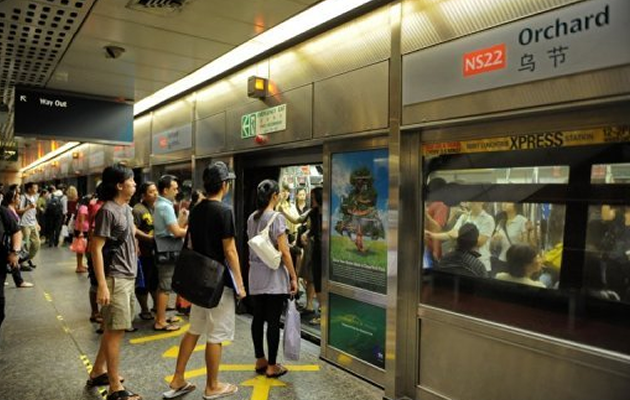Land Transport Authority to buy SMRT’s operating assets for $991 million

Photo: AFP
The Land Transport Authority is set to buy railway operator SMRT Corp’s operating assets for almost a billion dollars, in a deal that has been under negotiation for five years.
Under the new rail financing framework, LTA will take over ownership of the North-South and East-West Lines (NSEWL), the Circle Line and the Bukit Panjang LRT. SMRT will now focus on the operation and maintenance of the rail network.
Subject to approval by SMRT’s shareholders, the deal will result in SMRT’s operating license being shortened from the current 30 to 40 years, to 15 years.
The $991 million purchase by LTA is derived from the net book value of SMRT’s operating assets.
Rail Financing Framework
The move is part of the rail financing framework that was announced in the 2008 Transport Master Plan. The Downtown Line, which is operated by SBS, came under the framework in 2011.
SMRT will pay an annual license charge for the right to operate and earn revenues from its three railway lines. This fee will go into the Railway Sinking Fund, for the maintenance and upgrading of operating assets.
According to the LTA, the license charge will allow SMRT to achieve an EBIT (earnings before interest and taxes) margin of about five per cent. LTA and SMRT will share profits and risk in line with the aim of operating a more financially sustainable rail system.
Effects on the commuter
The LTA has stressed that the deal will not affect public transport fares, which will continue to be regulated by the Public Transport Council.
The transport regulator has also imposed new Maintenance Performance Standards (MPS), which will empower it to compel SMRT to make changes and improvements to operating assets if deemed necessary.
The MPS will complement the current outcome-based Operating Performance Standards, with a disincentives and penalties such as fines.
To meet the new standards, SMRT will increase its maintenance staff by a fifth, or 700 more workers, by 2019.
New framework may lead to competitive rail industry
Transport analyst Professor Lee Der Horng from the National University of Singapore said that it is prudent for the government to take over SMRT’s rail assets.
As the government had planned, designed and constructed the original rail network, it knows the system well and is in a position to make sound decisions on asset management, Lee said.
Despite the transfer of rail assets to LTA, SMRT will still have to watch its margins carefully, said Dr Walter Edgar Theseira, a senior lecturer at SIM University.
“If you remove the asset burden from SMRT, does that make a difference to its ability to finance more on operations, maintenance and other areas? You have to combine removing the assets with putting into place a more strict regime for monitoring and licensing,” Theseira said.
With the new framework, the transport analysts said that the rail sector in Singapore could be liberalised, similar to how the bus contracting model is making the bus sector more competitive.
“An operator can bid to take over a rail line but it doesn’t have to assemble the capital to buy the assets. It can say ‘we have a management team, we have the operational expertise, we can run this better than the incumbent,’” Theseira said.
Lee said that the shortening of SMRT’s operating license to 15 years points to the possibility of a more competitive rail sector.
“We can see overseas operators bid for the rail operations. The sector is profitable. You can see from the financial reports of the two current operators. Definitely, it is attractive (for new operators),” Lee said.
- additional reporting by Vernon Lee

